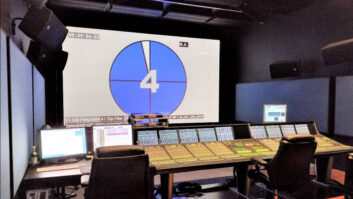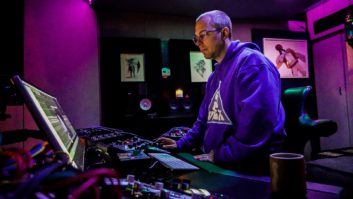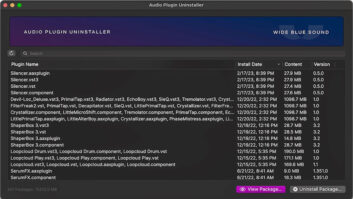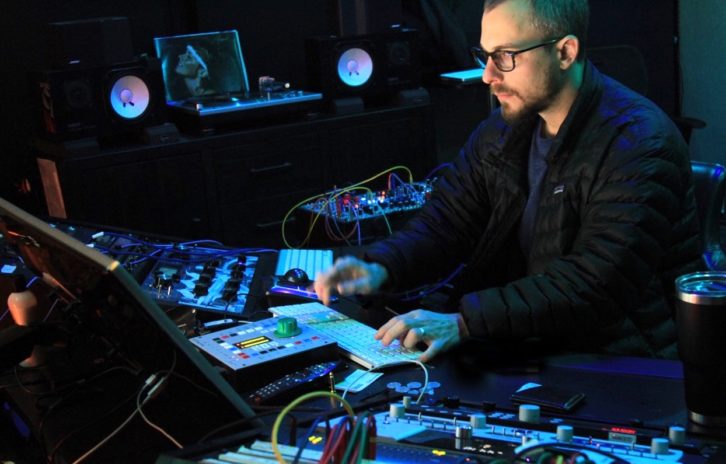
It’s easy to get lost in the maze of paths, buildings and hallways at the historic Henson Recording Studios in Hollywood. Finding Josh Gudwin in this labyrinth, however, is relatively easy. The superstar mix engineer makes his headquarters underground where he commandeers two small-ish but comfortably laid out rooms. Despite the compactness of this space, Gudwin has four engineers—two of them women—working for him, each occupied with an entirely different task, plus there is his genial dog, Stax.
It is in this subterranean lair that Gudwin mixes 350+ songs a year. Among these have been the Grammy-winning albums, YHLQMDLG for Bad Bunny and Burn the Ships for KING & COUNTRY, as well as the song “Electricity” for Silk City and Dua Lipa featuring Mark Diplo and Mark Ronson. Gudwin’s Grammy nominations started back in 2011 with Rhianna’s Loud. He’s been nominated with Lipa for “Don’t Start Now” and Future Nostalgia, and twice with his core client, Justin Bieber for his monster long-player Purpose and the massive smash “Despacito.” Not to mention he has also snagged five Latin Grammys for his work with Bad Bunny again, plus J Balvin and Juanes.
A couple of these Grammys are sitting on top of the multiple sets of speakers in Gudwin’s mixing room, the one he calls the “fun” room. His second room is for mixing in Dolby Atmos, which he is being asked to do more and more often, including (re)mixing Bieber’s and J. Balvin’s back catalogs.
“I’m taking mix stems from my already mixed songs, opening them up and making them dimensional,” Gudwin says while sitting on his studio floor, twisting himself in restorative yoga positions. “I’m molding my mix into an Atmos space where musically it translates in a completely different way than how we listen to music now.
“The Atmos mix already has the right EQ and compression and all that stuff,” he continues, “but there are speakers on the ceiling, the walls, behind you and in front of you. You can play with the whole thing at once and pan things. I can move objects into different speakers. They can share speakers, they can share height, they can share depth. I can put a sound that’s sitting more in the front of the room and move it to the back of the room, make it feel higher. Doing all that to where psychologically it doesn’t feel weird is hard to do with music because mono is still the truest way to listen to music. It’s going to take me 200 mixes, making mistakes and doing the dirty work to dial the Atmos room in. Once that’s done, it is going to be a fun room to go into too.”
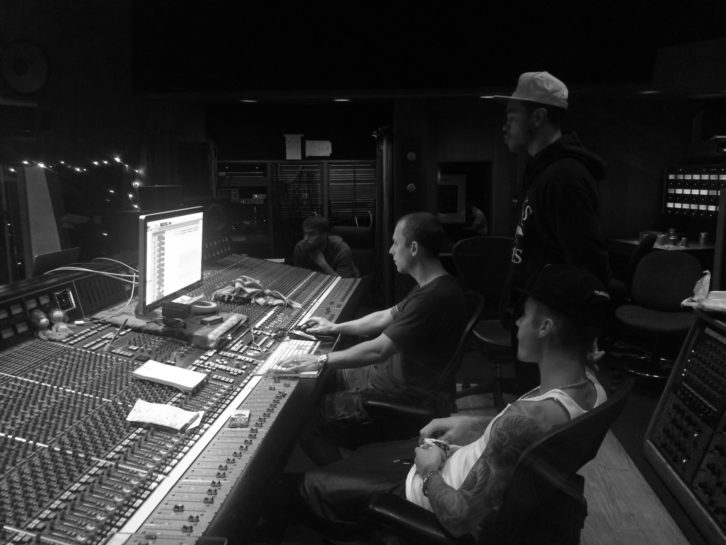
JUANES, BAD BUNNY, LIPA
A Hall of Fame alum of Full Sail University, Gudwin has always been learning on the job, but you would never know it hearing his final products. When Mix spoke to Gudwin five years ago in the darkened SSL3 Studio at Record Plant, it was just a few months after the release of Bieber’s multimillion-selling Purpose. Gudwin cut, produced and mixed all the vocals on the album, on his own. It marked his second time doing so, the first being for Believe Acoustic, after tutelage from Kuk Harrell. And in a steep learning curve, Gudwin also mixed the majority of Purpose.
It was through his work on Purpose that Gudwin was put forth by his sometime assistant engineer, Henrique Andrade, to mix Juanes’ album, Mis Planes Son Amarte. The album won the Latin Grammy for Best Engineered Album and Best Pop/Rock Album in 2017. It also started Gudwin’s career in the Latin market, most notably with chart-toppers J Balvin and Bad Bunny, with whom he won four more Latin Grammys. For the latter, Gudwin mixed an entire album in one weekend, “All night prepping, all day mixing. At that point, it’s a sport,” says Gudwin.
“I know he’s going to elevate whatever I’m doing and take it to that next level,” says omnipresent super-producer Tainy who has worked with Gudwin on many songs for Bad Bunny and J Balvin. “He respects our vision as producers: how we feel, how a song should feel, how it should sound level-wise, and the essence of it. It’s something that you don’t always get with a mixing engineer.”
For a lot of the Latin material, the song is being fixed in the mix and sometimes has different arrangements than the files Gudwin receives. Tainy concurs that some of the files presented to Gudwin are “messier” than others. He namechecks one of Bad Bunny’s most successful songs, “Safaera,” as one with multiple rhythms, beats and mid-song tempo changes as a challenge to mix.
Instead of printing his first pass, for these mixes and many others, Gudwin, who works in Pro Tools, sends a high-fidelity link to Tainy. They then get on FaceTime or text, going through the mix section by section, making adjustments based on the notes.
“Every sound should be exported the way it sounds in the session,” says Gudwin of how he likes stems. “For production elements like synths, if a synth has a big reverb, and it’s timed out right and it’s part of the sound, that stays in. For a vocal, when you start EQ-ing, you also have to EQ that reverb out and if they’re tied together, you’re affecting too much stuff. Also, when you turn everything up and it gets compressed, that reverb gets louder and sometimes it drowns out the vocal. Being able to turn down a vocal a couple dB can save that miscommunication.”
Gudwin also suggests sending a dry version without the effects and a wet version with just the effects printed on a separate track. This way, if they’re both playing back at the same level, it should sound exactly like the session, but if the guitar is coming out too high in a mix, it can be turned down easily.
“A rookie move for a young engineer is, ‘I’ve built the song up to where it is, I’m not going to pass it on to a mixer who is just going to use my sounds,’” says Gudwin. “All the work put into it—what the artist and the producer have been hearing—if you were to strip all that away and just give me blank sounds, you’re stripping all that work away from the artist and the producer. I’m not trying to rebuild what was already built. By getting a reference mix, I can build from there and take it to the next level.”
Mix Cover Story: Dave Way is Digging Atmos Music
In contrast, Gudwin’s mixes for Lipa come with a firm reference mix, or with a mix that simply has all the sounds and arrangements. “Sometimes clients don’t want to veer anywhere off the reference mix,” he says. “They just want it to sound a little bit more open, cleaner, and more expensive.”
Lipa’s A&R, Joe Kentish, now the president of Warner Records UK, says, “I played [Gudwin] some music and discussed where I felt [Lipa]’s record was,” says Kentish. “It had been made over time with various people and in various locations. Artistically, there was a strong theme, but there was still work needed to pull it together an album. We wanted a dynamic record that didn’t sound like it had all the life mixed out of it. If that sounds a bit vague, it is. [Gudwin] got it from day one. He spent a long time to get the records sounding the best he possibly could.
“When it came to Future Nostalgia, it was an easy choice to work with him again. [Lipa] wanted something very specific. He was able to give us records that felt lush and euphoric, but that still knocked next to modern records.”

